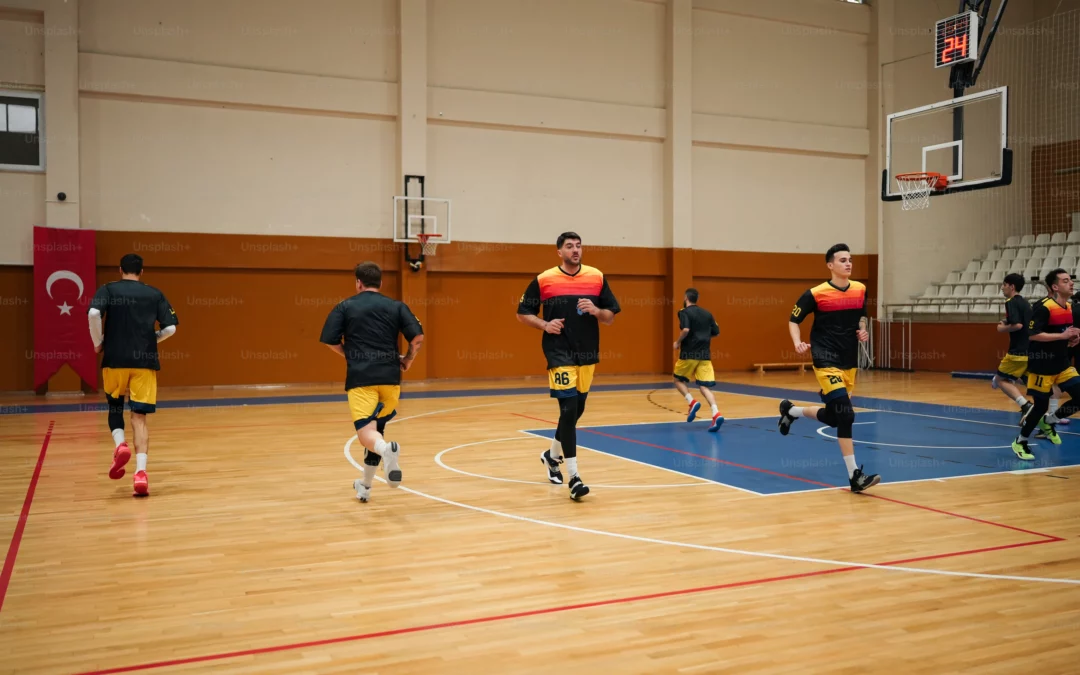Basketball is a dynamic and physically demanding sport that requires players to possess a range of skills, from shooting and passing to dribbling and defensive maneuvers. In this article, we will explore various basketball conditioning drills that can help players improve their skills and conditioning. Whether you’re a coach looking to enhance your team’s abilities or an individual player seeking to elevate your game, these drills have something to offer.
Long-Distance Shooting Challenge
Shooting is a fundamental skill in basketball, and this drill focuses on improving long-distance shooting accuracy and challenging players’ range.
The Setup:
- Position one player under one basket.
- The player attempts long-distance shots, progressively moving further from the basket after each successful shot.
The Challenge:
- The player has to make consecutive baskets to keep taking steps back.
- Missing a shot forces the player to take a step forward.
- Coaches can use this drill to evaluate players’ shooting capabilities at varying distances.
Two-Person Passing Drills
Passing is a crucial aspect of the game, and these two-person passing drills emphasize touch, movement, and coordination.
Stationary Passing:
- Two players stand facing each other with the ball in their left hands.
- Pass the ball back and forth while maintaining a steady rhythm.
- Players should focus on using their left hand to pass and receive the ball.
Moving Passing:
- Players repeat the drill while moving from one end of the court to the other.
- This exercise enhances passing skills under dynamic conditions.
Touch Pass Variation:
- Players pass the ball in a “touch and pass” manner, making it challenging and promoting better coordination.
One-on-One Corners Drill
This one-on-one full-court drill is an excellent way to enhance both offensive and defensive skills, as well as overall conditioning.
The Drill:
- One player has the ball, starting in one corner of the court.
- The defensive player is in the opposite corner.
- The offensive player has a limited time (e.g., 5 seconds) to score.
- Coaches can adjust the time limit based on the players’ skill levels.
Key Emphasis:
- Offensive players must sprint and use their skills to score.
- Defenders must attempt to prevent a layup or an easy score.
- The drill encourages competitiveness and challenges players to execute under pressure.
Two-Ball Dribbling and Ball Control
Dribbling is a fundamental skill in basketball, and this drill focuses on dribbling with intensity and ball control.
Two-Ball Dribbling:
- Players dribble two basketballs simultaneously.
- Emphasize pounding the balls hard to improve ball-handling skills.
Stationary and Moving Dribbling:
- Start with stationary two-ball dribbling, then transition to moving while maintaining control.
- This exercise enhances players’ ability to control the ball while in motion.
Dribbling with a Balloon
Dribbling with a balloon is a unique and challenging drill that improves ball-handling skills and focus.
The Drill:
- Players dribble a basketball while keeping a balloon in the air using their other hand.
- This exercise emphasizes dribbling skills and multitasking.
Variations:
- You can use different sizes of balloons to vary the difficulty.
- Introduce a fan to create airflow, making it even more challenging.
These drills offer a comprehensive approach to skill development and conditioning in basketball. Coaches and players alike can incorporate them into their training routines to become more well-rounded athletes on the court. Remember, consistency and effort are key to mastering these skills and becoming a better basketball player.
Related: Dynamic Warm-up Drills and Shooting Practice
Resources:
Coach Unplugged Podcast:
If you found this useful, don’t forget to check out additional blog posts at TeachHoops.com. Also, check out TeachHoops on Facebook, Twitter, Instagram and YouTube.




